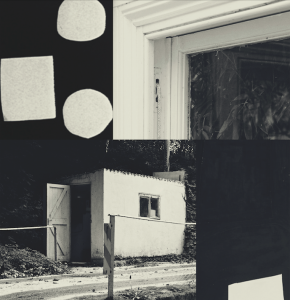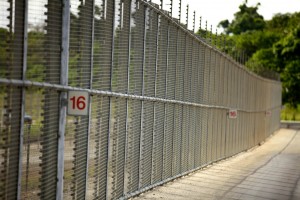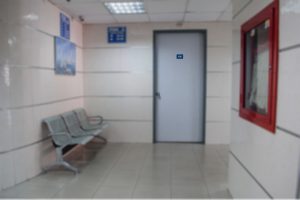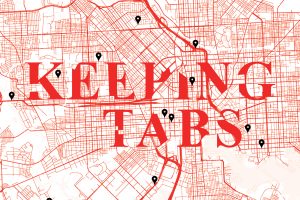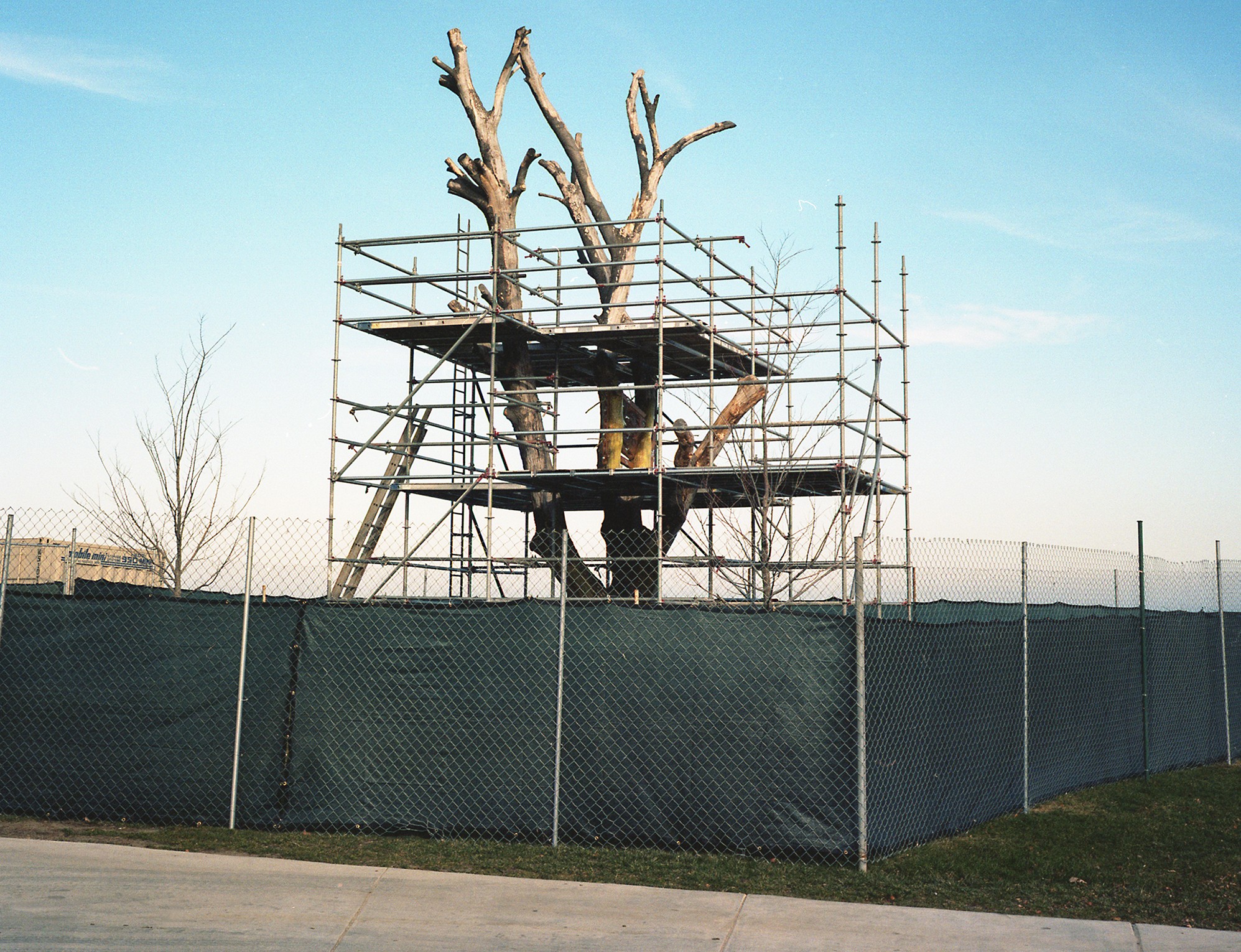
Behind Closed Doors: The Truth About Oxfordshire’s Detention Centre
by Alexander Beecham | January 22, 2015
Six miles from Oxford, in Kidlington, a motley band of radicals get together every month to protest outside Campsfield House, an ‘immigration removal centre’. This bland, bureaucratic terminology obscures the building’s malign purpose: keeping detainees against their will. Unlike the inmates of Bullingdon Prison fifteen miles away, those behind bars at Campsfield are not being punished for crimes, but for their ‘immigration status’. There is no legal limit for the amount of time someone may be detained there. The state is not obligated to offer a free trial or legal representation to someone stuck, literally, in our immigration system.
If any of the above causes you concern, you’re not alone. From its inception in the early 1990s, the organisation Campaign to Close Campsfield has been exposing the centre’s unethical mission statement. They return to picket Campsfield every month, and will not stop doing so until it is shut down.
One of their main causes for concern is the treatment detainees receive, which came to a head last autumn. In October, a suicidal inmate at Campsfield tried to take his own life by starting a fire. The blaze hospitalised two other detainees. Critics were appalled that there were no sprinklers fitted, despite the Fire Service’s strong recommendation for the Home Office to install them. In a press release following the incident, the Chief Fire Officers Association argued that ‘‘the extensive spread of the fire might have been halted before the lives of fire fighters and the centre’s staff and residents were put at risk, had the Home Office listened to Oxfordshire Fire Service’s advice to fit sprinklers at the Campsfield Centre’’.
MITIE, the private company running Campsfield for the Home Office, claim to pride themselves on fire protection. ‘‘By containing or compartmentalising fires,’’ their website claims, ‘‘we can stop fires from spreading, save lives, and even prevent buildings from collapsing’’. These claims ring rather hollow when faced with the evidence of a blazing building, and the hospitalisation of two inmates.
Curiously, in 2002, then-Home Secretary David Blunkett committed to closing the detention centre; in the same year, it was condemned by HM Inspectorate of Prisons as not being a ‘‘place of safety’’. This stance on Campsfield was later withdrawn. Approached for comment regarding this U-turn, and the treatment of detainees, the Home Office did not respond.
The linguistic framing of the debate over Campsfield is instructively and starkly divided: the state’s official terminology, found on the Home Office’s website, calls Campsfield a ‘‘removal centre’’, where ‘‘detainees are accommodated’’. This glosses over Campsfield’s indefinite holding of inmates, which has become the focus for monthly protests. The Campaign’s website, on the other hand, calls Campsfield House ‘‘a prison run for private profit by MITIE, supervised by Home Office immigration officials’’.
On 25 January 2014, a demonstration was held outside Campsfield House. The red-brick blocks look more suited to a factory than the housing of human beings, and a fence, topped with rows of barbed wire, lines the whole perimeter. The police, a few metres away, sat watching protestors from a van. The message is clear: they’re staying in, you’re staying out.
Before long there were chants from the protestors, variously against state racism, affirming the right to asylum, and demanding Campsfield’s closure. These were all made with no view of any detainees or staff, except intermittently. There is a car park and outbuilding between us and where detainees are held. Who are the protestors shouting at? A hand pokes out from one of the windows in the distance, waving at us, followed by calls to ‘‘release us’’. Suddenly, the appearance of that single hand and voice seems to communicate something symbolic about occupying public space, about the limits of the presence of the imprisoned.
The inmates are invisible and inaudible, but the eerie, disembodied voice coming from the building creates a small window of communication between the detainees and the crowd outside. Solidarity grows across the fence.
David – not his real name – is an ex-detainee of Campsfield, who fled to the UK after being tortured for political subversion back in his home country. When asked what he thought was most vital to communicate about Campsfield, David spoke about the injustice of keeping ‘‘fellow human beings’’ in inhumane conditions. The experience of being detained, he told me, was a kind of ‘‘mental torture’’ because there was no prospect of release. These people are imprisoned, but they are not serving prison sentences. Describing his mental state to me when he was in Campsfield, he exclaimed to me with stark frustration: ‘‘why, why, why, why, why?’’
David told me that some guards would give advice on attempting to gain release from detention, which, according to him, they’re forbidden to do, or organize activities in an attempt to keep spirits up. Some of the guards are evidently pretty uncomfortable with their own position in the detention system.
Pressed for his thoughts on the British immigration system, David told me that it was ‘‘a shambles’’, characterized above all by hypocrisy. We British like to think of ourselves as protecting the values of democracy and human rights, but ‘‘when it comes to foreign nationals, it’s the other way around’’. He identified the manipulation of the media as particularly harmful: ‘‘when politicians are looking for votes, that’s the picture they show: that immigrants are criminals. But people migrate for different reasons.’’
Knee-jerk xenophobia was evidently at the root of his concerns; the assumption that all immigrants are guilty until proven innocent, the scapegoating of foreigners by politicians and – something the Home Office is particularly guilty of – a general refusal to engage with the complexity of asylum seekers’ and other detainees’ individual situations.
The process certainly takes its toll on detainees: Campsfield’s short history is chequered with hunger strikes and suicides. Last year there were eight recorded cases of self-harm requiring medical treatment. In 2010, about half the centre’s detainees went on hunger strike, protesting against their unimpeded detention.
Campsfield is not any closer to closing, despite the considerable movement to do so. But that is not to say the Campaign to Close Campsfield has been useless. When they can, they provide support to detainees who request it, building friendships that may continue after deportation, and providing aid in legal matters. They play a key role in questioning the state’s treatment of immigrants, bringing human rights abuses to light and criticising the thinking used to encourage the militarization of our borders.
Bureaucracy has been allowed to tie humans into inescapable webs of seemingly unending legal procedure, validated through simple banality. A member of the campaign tells me, in no uncertain terms, that as the state can lock people up based solely on immigration status, ‘‘they’re literally locking people up for being foreign. It’s racist.’’ Racist or not, banal or not, detaining torture victims, refusing free trials, and forbidding legal representation is indefensible. And all of this happens in a quiet little town called Kidlington, just a few miles away from Oxford.
“Why, why, why, why, why?”
Image by Timothy Burkhart
